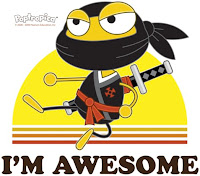1. What are your top 1 - 3 goals?
Think about today, this week, this month, this quarter—in that order. Make sure today's goals support this week's, this week's support this month's, and so on until you reach the mission. If not, your ducks aren't in order. Seek guidance on adjusting them. Make sure all goals serve each other and the mission.
2. What are the biggest obstacles in the way of reaching those goals?
Inevitably, goals have roadblocks. Highlight them. Call them out. Pick them apart. Be ruthless. Your strengths should be what you use as much as possible in your work, but you'll need the strengths of others to round you out and bust through the roadblocks.
3. What resources/people are available to help overcome the obstacles?
Who is available to help? There may be people in your periphery you're not considering, or someone who is looking for a challenge. Perhaps you can build a business case for a new position that would allow the rest of the team more time to focus on their strengths. Who are you underestimating that's looking for chance? Who has connections to others that are likely to pan out. Widen your focus if you have to.
4. What are the strengths and weaknesses of each person on that list?
In order to manage effectively, you have to know the strengths and weaknesses of everyone helping you. If you don't, your team isn't performing to its highest potential. One way I keep track is a Core Strengths Document.
5. What is the most effective strategy to achieve your top goals?
You know your goals, your roadblocks, your team, their strengths and weaknesses. Together with your team, plan your work.
6. Does each of your team members know the answers to questions 1 - 5?

It's easy to assume that everyone knows your mission and how daily tasks relate to it. Don't. Make sure everyone knows the answers to 1 - 5. Better yet, make sure they are involved in answering at least some of them. The whole team has to own the whole mission, so you're working separately to achieve common goals. Once everyone can answer 1 - 5, work your plan.
Think about today, this week, this month, this quarter—in that order. Make sure today's goals support this week's, this week's support this month's, and so on until you reach the mission. If not, your ducks aren't in order. Seek guidance on adjusting them. Make sure all goals serve each other and the mission.
2. What are the biggest obstacles in the way of reaching those goals?
Inevitably, goals have roadblocks. Highlight them. Call them out. Pick them apart. Be ruthless. Your strengths should be what you use as much as possible in your work, but you'll need the strengths of others to round you out and bust through the roadblocks.
3. What resources/people are available to help overcome the obstacles?
Who is available to help? There may be people in your periphery you're not considering, or someone who is looking for a challenge. Perhaps you can build a business case for a new position that would allow the rest of the team more time to focus on their strengths. Who are you underestimating that's looking for chance? Who has connections to others that are likely to pan out. Widen your focus if you have to.
4. What are the strengths and weaknesses of each person on that list?
In order to manage effectively, you have to know the strengths and weaknesses of everyone helping you. If you don't, your team isn't performing to its highest potential. One way I keep track is a Core Strengths Document.
5. What is the most effective strategy to achieve your top goals?
You know your goals, your roadblocks, your team, their strengths and weaknesses. Together with your team, plan your work.
6. Does each of your team members know the answers to questions 1 - 5?

It's easy to assume that everyone knows your mission and how daily tasks relate to it. Don't. Make sure everyone knows the answers to 1 - 5. Better yet, make sure they are involved in answering at least some of them. The whole team has to own the whole mission, so you're working separately to achieve common goals. Once everyone can answer 1 - 5, work your plan.










